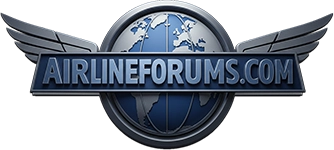Reverse Thrusters Cited in Midway Crash
By ******* * ******, Associated Press Writer
4 hours ago
CHICAGO - The reverse thrusters that should have slowed a Southwest Airlines jetliner before it slid off a runway and into a busy street didn't immediately kick in when the pilots tried to deploy them, federal investigators said Saturday after interviewing the crew.
The flight attendants said they could tell the Boeing 737 wasn't slowing after it touched down in the snow Thursday evening, and the pilots said they applied the brakes manually as soon as they realized something was wrong, said Robert Benzon, National Transportation Safety Board investigator in charge.
"They all said it was a smooth landing but they could sense a lack of deceleration," Benzon said.
The plane, with 98 passengers aboard, slid off a 6,500-foot runway at Midway Airport, through a fence and into street traffic, where it hit two cars and killed a 6-year-old boy riding with his family. Ten people, most of them on the ground, were injured.
Funeral arrangements are being made for Joshua Woods, and an attorney for Woods says a trust fund for the boy's family also is being created. Woods, his two brothers, mother and father were passengers in one of the cars.
Attorney Ronald A. Stearney says Woods' father, Anthony, was released from the hospital yesterday. He suffered several fractures to his face and back of his head. The boy's brothers suffered only cuts and bruises. Their mother left the hospital last week.
Investigators are still trying to determine how much of a role the braking equipment played in the accident.
Because of the blowing snow, none of the air traffic controllers actually saw the plane land, but more than 10 cameras have been identified that could provide additional information, including details about the runway conditions, Benzon said.
On Saturday, workers used a crane with a sling to lift the damaged airliner off the city street and into a hangar for further inspections. The plane's voice and data recorders have already been sent to Washington for analysis, NTSB member Ellen Engleman Conners said.
Southwest said the captain piloting the plane has been with the airline for more than 10 years, and the first officer has flown with Southwest for 2 1/2 years. It was the first fatal crash in the airline's 35-year history.
Though the airport had about 7 inches of snow at the time, aviation officials said conditions were acceptable. Southwest chief executive Gary Kelly said on Friday that the plane had recently had a maintenance check and showed no signs of problems.
Midway _ built in 1923 and surrounded by houses and businesses _ is among nearly 300 U.S. commercial airports without 1,000-foot buffer zones at the ends of runways.
Safety experts suggest the airports guard against accidents by using beds of crushable concrete that can slow an aircraft if it slides off the runway's end.
The crushable concrete beds _ called Engineered Material Arresting Systems _ are installed at 18 runways at 14 airports. They have stopped dangerous overruns three times since May 1999 at Kennedy Airport in New York.
Chicago Department of Aviation spokeswoman Wendy Abrams could not immediately say whether an arresting system had been considered at Midway.
Some pilots say relatively short runways like Midway's pose a challenge in icy or snowy weather, forcing them to touch down as close as possible to the beginning of the runway to allow more braking time.
"It's not a place you can be a little off," said Richard Ward, a retired United Airlines pilot who occasionally flew into Midway. "You don't have the variable of a long runway to correct any errors."
The damaged nose of the Southwest Airlines Boeing 737 ...
View attachment 3806

